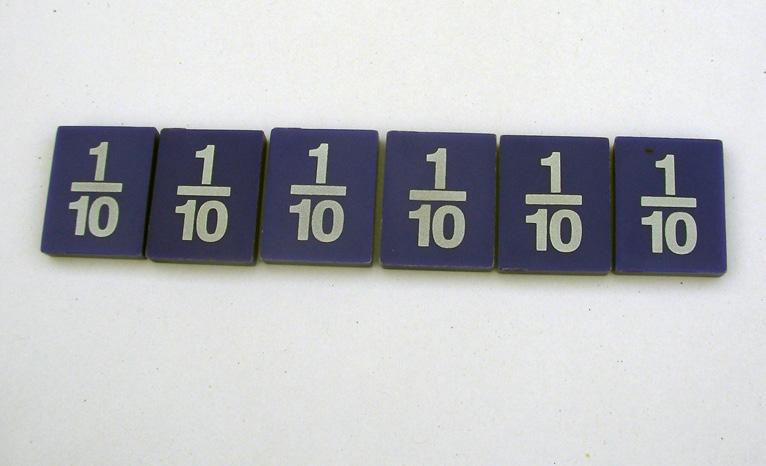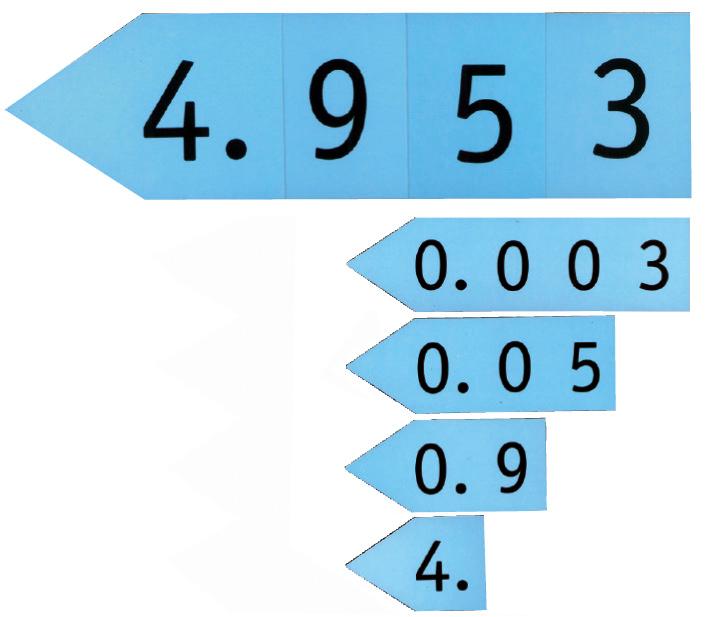Diagnostic questions
- Draw a square on a piece of grid paper and write 0.5 inside it. Tell the student that the square is 0.5 of a larger rectangle.
Ask the student to draw the larger rectangle.
If the student is struggling, tell them that the square is half the size of the larger rectangle and see whether this helps. - a. Show the student a second square with 0.1 written on it. Tell the student that the square is 0.1 of a larger rectangle.
Ask the student to draw the larger rectangle.
If the student is struggling, tell them that the square is one-tenth of the size of the larger rectangle and see whether this helps.
b. Draw four identical squares with 0.1 written on them and ask the student what decimal they represent.
c. Ask the student what fraction of a larger rectangle the four squares represent. - If the student demonstrates an understanding of 0.5 and 0.1, draw a square with 0.25 written on it and ask them to show you the size of the larger rectangle. If necessary, tell the student that the paper is one-quarter of the original rectangle.
What to notice in the student’s response
Does the student know that 0.5 is equivalent to 1/2?
Do they know that two halves make a whole?
Does the student know that 0.1 is equivalent to 1/10?
Can the student identify that 4 x 0.1 is 0.4?
Does the student know that 0.25 is equivalent to 1/4?
Deliberate acts of teaching
Materials
- Decimats (Material master 7-3) (PDF, 82KB)
- Place value house or place value flip chart for decimals
- Decimal arrow cards
- Digital Learning Object: Decimaster (Number, level 3)
Use whole numbers to review the rules for place value. For example, 10 of one unit creates a new grouping or room in a place value house; a place has 10 times the value of the place that comes after it and 1/10 of the value of the place that precedes it.
Use these rules to identify the value of the first decimal place.
Decimats
Use one colour for the mat on which the decimals will be modelled and different colours to represent tenths, hundredths, and thousandths.
Cut out tenths and use them to model different decimals (1 d.p.).
Model a decimal such as 0.3 and ask the student how many tenths are needed to make a whole. Make connections to making-tens skills.
Use the decimat to make visual links between 1/2 and 0.5, 1/4 and 0.25, 1/5 and 0.2, and 1/10 and 0.1.
Explore place value to 3 decimal places.
Introduce problems involving whole numbers, for example, 2.3 + = 4. Relate the decimat model to the way decimal values are written or to arrow cards.
Use Digital Learning Object: Decimaster to model numbers and to locate them on number lines.
What to do next if the student is stuck
Check whether the student understands whole number place value and unit fractions. Do not move on to the second and third decimal places until the concept of tenths is secure. Use other objects that can be divided into ten pieces.
Initiating home-based activities
The student can make a copy of decimats or use Digital Learning Object: Decimaster to practise at home.
Encourage the student to record decimal numbers that they find in their home environment.
Send home a copy of Decimal Place Loopy.
Next teaching steps back in the classroom
Give the student problem-solving activities involving decimals, with equipment available if required.
Measurement and statistics work are useful contexts within which to explore decimals.

